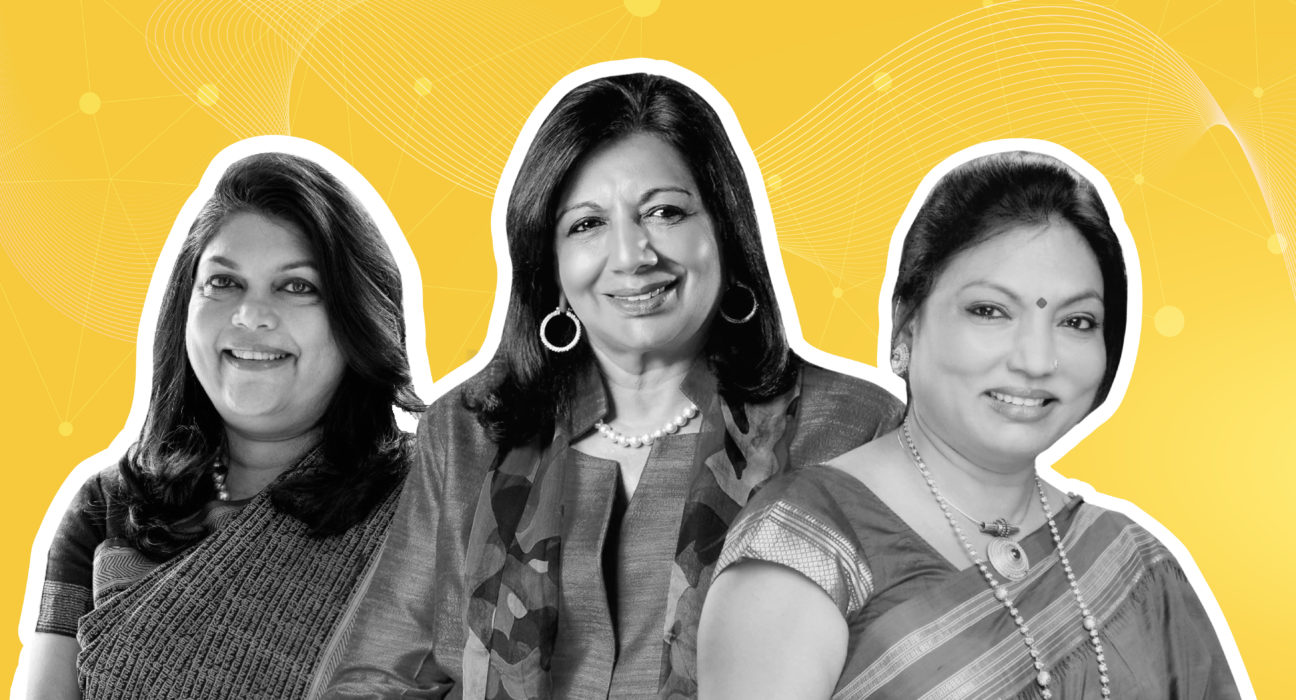With a net worth of Rs 57,520 crore, Falguni Nayar is now India’s richest self-made Indian woman – making her one of the very, very few women to make it on the Hurun India Rich List.
This, undoubtedly, is progress – But is it enough?
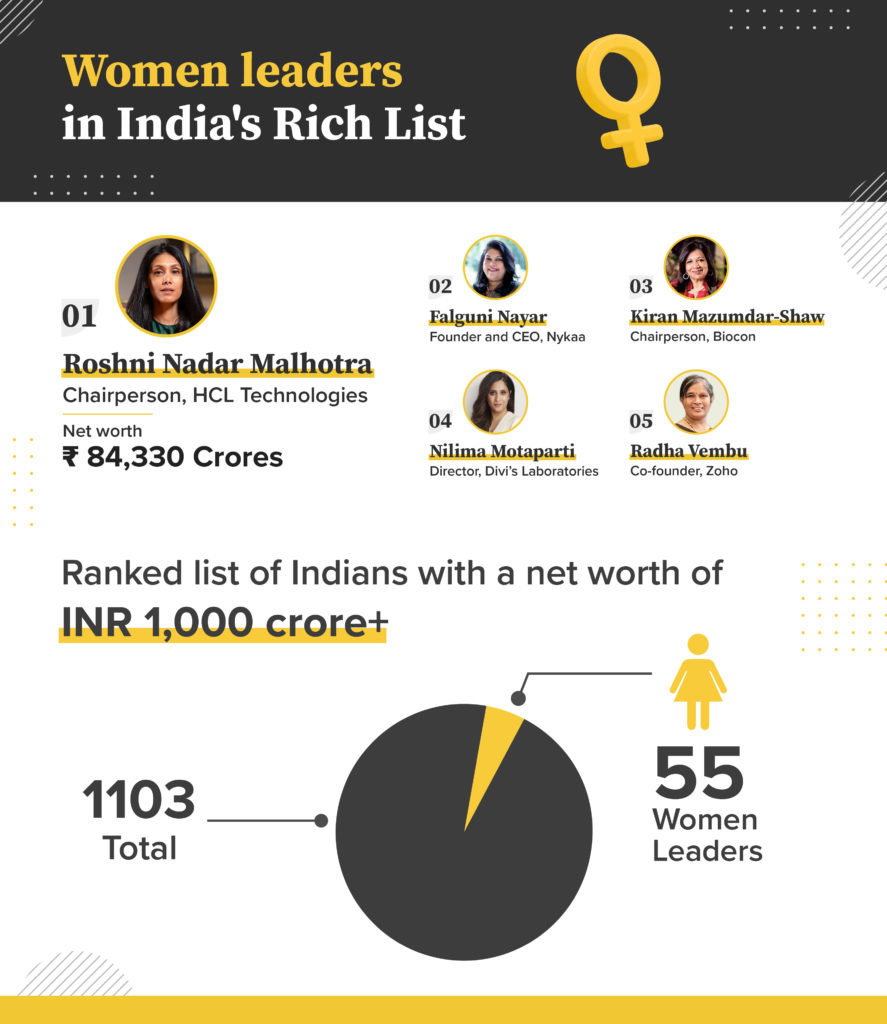
Women leaders – the socio-capitalist dream
It’s a fact – we need more women entrepreneurs.
This isn’t just a push for equality as a social activity – there’s a strong economic reason for ensuring that women entrepreneurs get all the support they need.
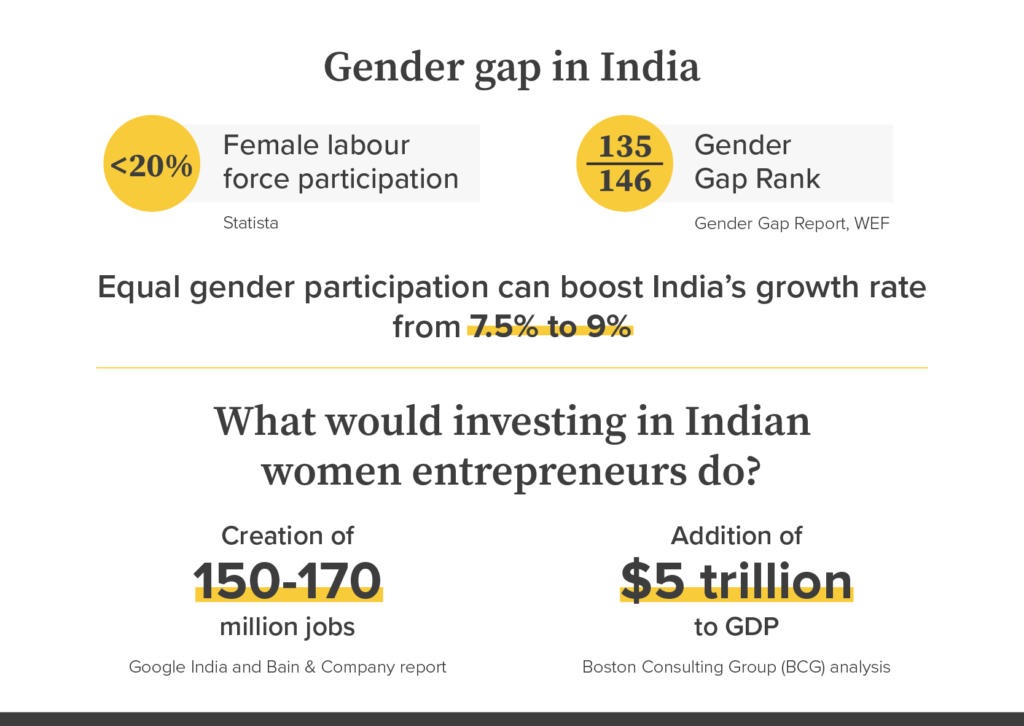
However, the barriers to entry for women entrepreneurs have always been high. Women experience gender-based discrimination from employees, vendors, and even investors – A 2017 study found that teams with all men are four times as likely to receive funding as teams with even one woman.
Women also struggle with accessing relevant business and technical skills, as well as formal and informal networks. And while there are several government schemes and policies supporting women entrepreneurs in India, awareness of these schemes is only around 11 percent, and uptake is a mere 1 percent.
Let’s take a look at the past, present, and future – how women’s entrepreneurship has evolved over time in India, how far we’ve come, and where we need to set our sights for the future.
Breaking Barriers: India’s Women Entrepreneurs in the Past
Until the 1800s, women only managed small handloom enterprises or ran small businesses – such as making pottery, papads (wafers), and bangles.
In 1877, Calcutta University first opened its doors to girl students, followed by Bombay University in 1883. With women finally entering institutions that had previously only been accessible to men, long-established gender stereotypes around business started breaking down. The stage was set for more women to begin seeking financial independence through entrepreneurship.
Government policies have also worked towards supporting this change. Since 1951, the country’s five-year plans for economic development have, among other things, focused on:
- Improving the enrolment of girls in schools.
- Improving women employability by providing technical and vocational training.
- Developing support services to reduce domestic work burden on women.
Sadly, up till the 70s, these policy initiatives have been more welfare-oriented rather than development-oriented. Despite this, more and more women broke new ground, creating access and opportunities where neither existed before.
For instance, in 1971, Jyoti Naik, aged 12, joined an Indian women’s worker cooperative to help her mother. The cooperative, Shri Mahila Griha Udyog Lijjat Papad, popularly known as Lijjat Papad, had begun in 1959 with only seven women but went on to become a multi-million-dollar venture employing 45,000 women across the country.
In 1978, the 25-year-old Kiran Mazumdar-Shaw founded Biocon Limited, a pharmaceutical venture focused on producing affordable and accessible medicines. The company went on to develop the world’s first orally consumed insulin product, among its other achievements. Biocon’s success made Mazumdar-Shaw one of the most powerful women in the world.
And then there was Kalpana Saroj, who came from a life of poverty, abuse, and caste-based discrimination, but went on to become the highly successful CEO of Kamani Tubes. Kalpana took over the company in 2000, when it had an outstanding debt of Rs 116 crore, salary and provident fund dues of over 500 workers, and more than 170 court cases. She settled all claims and paid workers’ dues (over Rs 8.5 crore, as well as an additional Rs 90 lakh as a goodwill gesture). The company’s authorised capital now stands at Rs 27 crore, and Kalpana’s personal assets amount to over Rs 927 crore.
These are just a few of the many women who paved the way for those who came after, facilitating economic as well as social growth and transformation through the late 20th century to the early 21st century.
Women Empowering Women: Entrepreneurship in India’s Present
Since then, things have moved fast. While the situation now is still far from ideal, we’ve made a lot of progress in the right direction.
The eleventh five-year plan (2007–2012) was the first that tried to move beyond empowerment and recognize women as change agents in themselves. Instead of a single chapter on woman and child development, this five-year plan took an integrated approach where women’s needs, rights, and contributions were reflected across the entire plan.
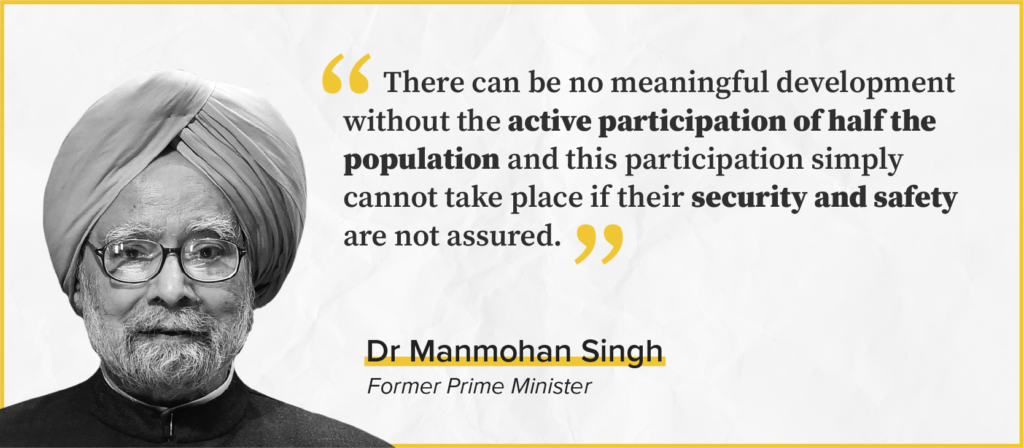
As per the Sixth Economic Census conducted in 2016 (the Seventh Economic Census results are delayed due to COVID-related disruptions), women only make up 14 percent of entrepreneurs in India.
However, according to a Google India and Bain & Company report, these numbers have risen over the last decade. Women today continue to break barriers: launching startups, becoming independent consultants, operating home-based businesses, and managing large enterprises.
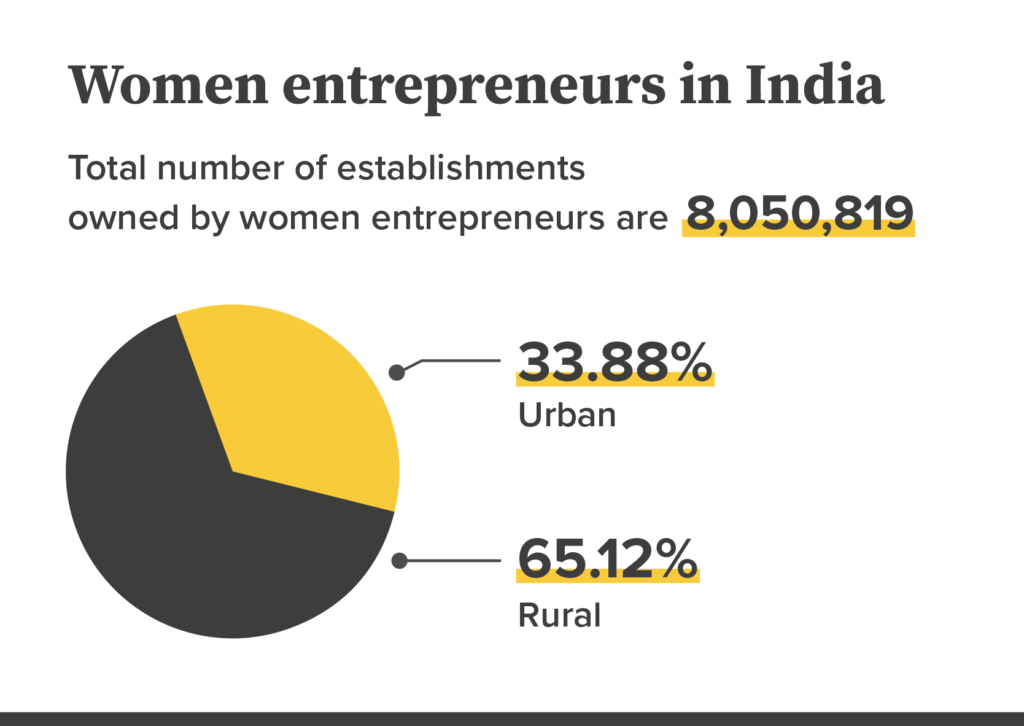
Source: All India Report of Sixth Economic Census 2016
Prominent women entrepreneurs today include Vani Kola, Managing Director of early-stage venture capital firm Kalaari Capital; Upasana Taku, co-founder at MobiKwik, one of the country’s first fintech companies; and 37-year-old Neha Narkhede, co-founder of Confluent and the youngest self-made woman entrepreneur in India.
More and more women are coming up with ways to empower and support other women entrepreneurs and professionals. For example, Sairee Chahal is the founder and CEO of SHEROES, a women-only social network that offers resources, support, and opportunities to women professionals. SHEROES had almost 1 million women and 20,000 companies sign up in just two years.
Other notable examples are Ela Bhatt, founder of the Self-Employed Women’s Association (SEWA), a trade union of self-employed women textile workers, and Chetna Gala Sinha, who started the Mann Deshi Foundation to empower rural women entrepreneurs.
Creating Equal Opportunities for Women: The Future
According to an EdelGive Foundation Report which sampled 1,235 women entrepreneurs from across 13 states and Union territories (UTs), women owned-businesses in India are expected to rise by 90 percent in the period 2021-26.
But this doesn’t mean that the struggle is over.
There are clear biases at work, especially in funding. According to a MAKERS India 2020 report, female-founded startups received only 1.43 percent of funding across 80 deals between Jan 2018 and June 2020. And according to an IFC report, there’s an INR 836 billion ($11.4 billion) financing gap among women-owned very small businesses.
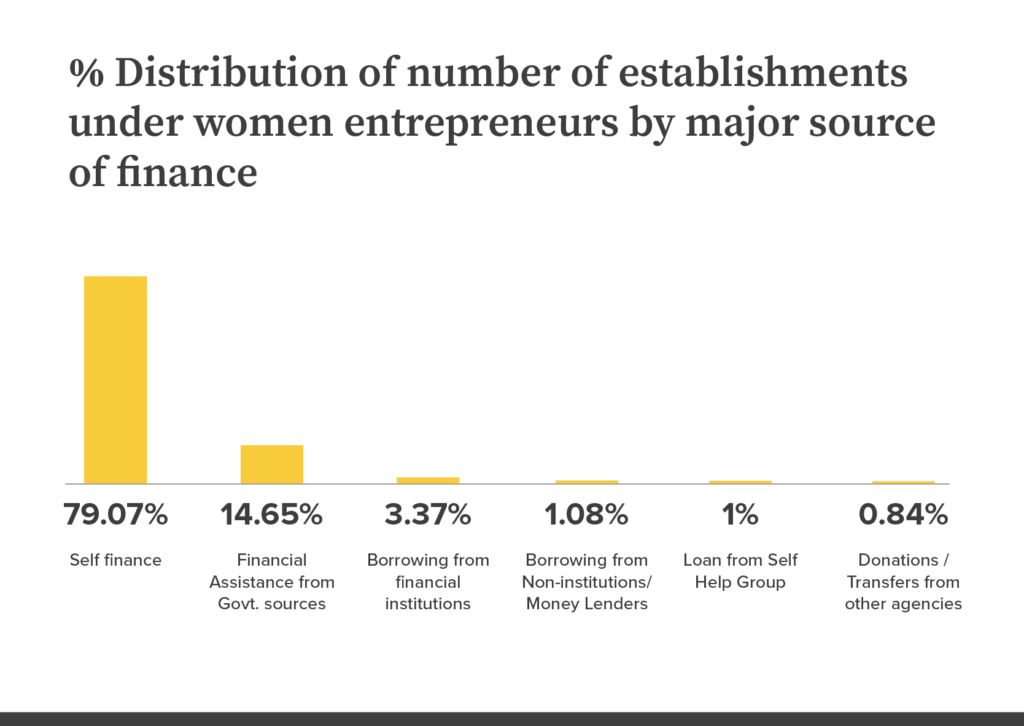
Source: All India Report of Sixth Economic Census 2016
As a country, we need to invest in women’s entrepreneurship.
We can do this by improving access to education, training, and infrastructure. We can work to create networking opportunities focused on women’s needs. Perhaps most importantly, we need to help women access financing more easily, increase awareness of government policies and schemes, encourage investment in women-led enterprises, and increase the representation of women across businesses and investment firms.
Ultimately, having more women entrepreneurs benefits everyone. The success of women entrepreneurs trickles down into their families and communities and impacts everything from children’s education and health to social outcomes, innovation, community services, and more.
India is fast becoming a startup hub, and we’re yet to properly tap into half of the population — imagine the progress we could make if we could fully unleash all of the knowledge, resourcefulness, and power that women hold.

